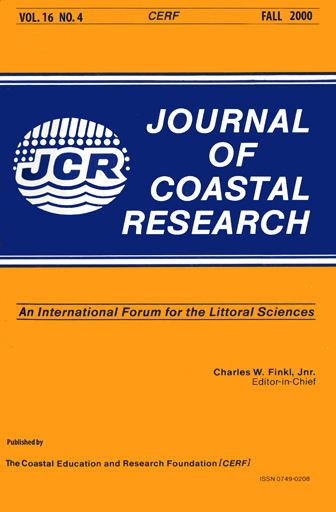Quaternary Reefs of Northeastern Sicily: Structure and Growth Controls in an Unstable Tectonic Setting
Keywords:
Uplifting, reef sediments, coastal notches, radiometric datingAbstract
Uplifted Quaternary reefs on the northeastern Sicily coast are frameworks dominated by coralline algae and calcified worms, as veneers on bedrock. The reef at Aci Trezza near Catania grew in the early Holocene sea-level rise on eroded early Etnean basalt, and in detail has a complex growth history, probably due to its long age (at least 9000 yBP) and coralligene character: it is likely to have spent part of its history in water depths up to c.60 m. It finally underwent tectonic uplift over the last c.8000 y, at a rate possibly as high as 3.4 mm/y. 40km north at Capo Sant' Alessio, the upper surface of a reef contains the coralline alga Lithophyllum byssoides (Lamarck) Foslie (previously called L. lichenoides Phillipi), and therefore grew at contemporary sea level, in the lower part of a +c.5 m bedrock notch with Lithophaga bivalves dated at c.5000 y; this approximately coincides with the mid-Holocene deceleration of sea-level rise, and the oldest age of this reef. The reef was uplifted in later Holocene times. Because sea level probably rose as much as 5 m in the last 5000 y, the uplift rate at this site may be as high as 2 mm/y. At Capo Sant' Andrea near Taormina (10km south of Capo Sant' Alessio), a reef containing L. byssoides grew on the 45° dip of an eastward dipping old fault plane cutting limestones associated with the Messina fault system. The reef extends to c. + 12m, but is notched at c.+5m; this correlates with notches both in nearby bedrock, and at Capo St. Alessio, at c.5000 y. The reef grew during early Holocene times, and possible earlier, but awaits dating; it was buried in micrite prior to uplift, suggesting it was drowned by rising Holocene sea level. At Capo Milazzo peninsula on the north coast, closely spaced notches up to 2 m above sea level are consistent with the slow uplift rate recorded for that area from Pleistocene times, of c.0.5 mm/y. A modern 1 m-wide reef rim occurs at sea level, and the only uplifted organic remains are isolated coral heads, insufficient as palaeosea-level indicators. Observations from the differences between reefs in these four localities combines with the fact that bedrock notches between Catania and Milazzo show poor correlation between sites, except over short distances. The reefs are therefore a useful tool to demonstrate differential uplift in the tectonically unstable area of northeastern Sicily.


